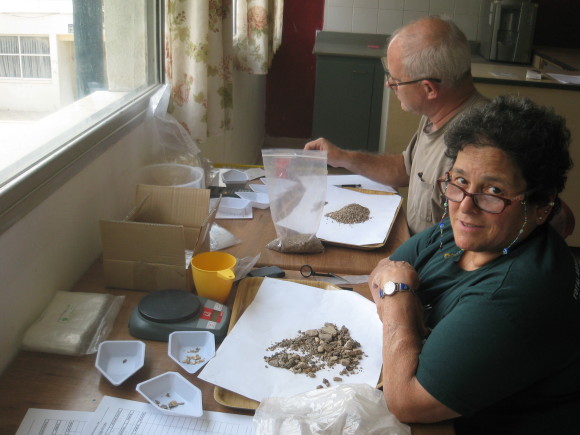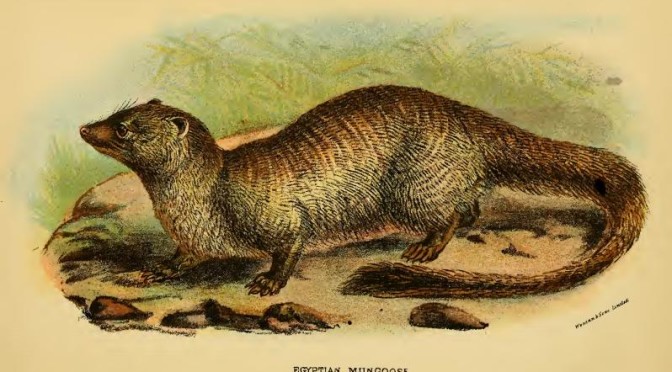The winner of the latest At Large photo contest is Todd LaJeunesse, an associate professor of biology at Penn State. His image is a stunning abstract of the mantle of a giant clam in the waters off Palau. The photo (above) is prominently featured in the October 2015 issue of Research|Penn State. In addition to publication of his photo, Todd will receive a high-quality print of the At Large spread, suitable for framing. Continue reading Dig that clam! And enter our new contest.
Category Archives: Earth & Environment
The Remains of Plants
Pottery, metal working, glass making and building all leave fairly large, tangible remains at an archaeological site. Sherds of ceramics, pieces of glass and slag, large stones, walls and floors all stand out when excavating. However, the remains of crop cultivation and the gathering of plants are not so easily seen, as only charred seeds and plant material remain and they are small and dispersed in the soil.
Archaeobotanists search through soil samples to find seeds and other vegetal remains. They use water to float the lighter material, including most seeds, to the top while the heavier portion sinks and is caught in a net. The lighter portion gets searched for seeds and charcoal and the heavy portion contains pottery, slag, iron hammer scales and the occasional bead or tiny sample of red ochre or ancient glass.
Mongoose on the Loose
This has been a year of critters on the tel. Students and staff have reported seeing green parrots, small raptors, black snakes and even a Palestinian Pit Viper, which was quickly dispatched. The usual annoyances of ants, flies and mysterious biting insects are of course present. As is the perpetual mole. This year he, or she, has moved to another area of the dig, out of MM20, I think, but maybe he is just not showing himself. Continue reading Mongoose on the Loose
Origin (and Demise) of an Idea
For a few days now I’ve been helping with some archaeobotany. Anyone who knows me knows I don’t really like biology, being more of a physical sciences kind of gal, but, this is interesting. We take soil samples that are “floated” to find any seeds, and other organic remains. In the process, there is a portion of the sample that falls to the bottom of the tank of water, the heavy fraction. I’ve been sorting through the heavy fractions. We find shells, pieces of pottery, bronze, lead and bones. On some of the samples, when we run a magnet over them we get pieces of slag, the remains of iron ore processing, and hammer scales, the remains of iron tool making. These are tiny blobs of iron that are forced off when the hot metal is struck. The samples are sort of a grab bag of the areas we are working as part of Total Archaeology at Tel Akko, a joint project of Penn State and Haifa University.

Monumental Rain
Rain—sometimes it’s a good thing, sometimes, not so much. Last winter the northern portion of Israel received a lot of rain. For the people in the area, for the farmers, for anyone living here, that is probably a good thing. For those of us trying to excavate an archaeological site on the top of a hill that is a municipal park, not so much. Continue reading Monumental Rain


